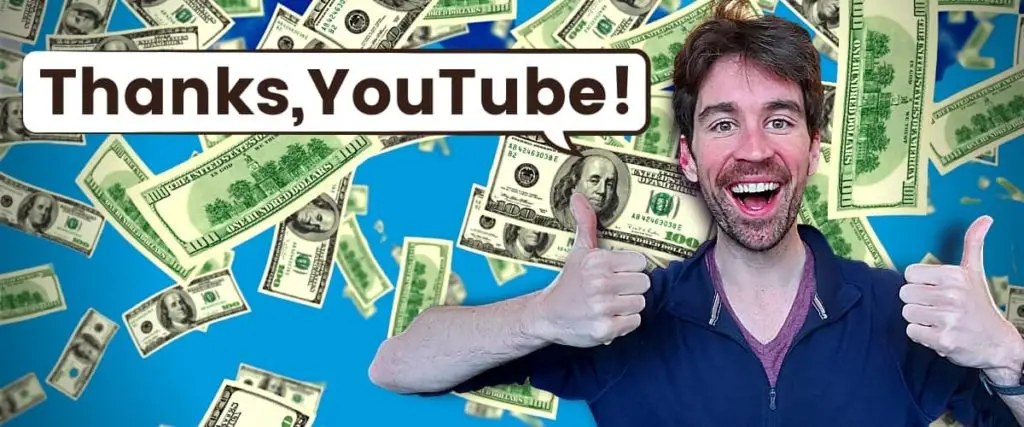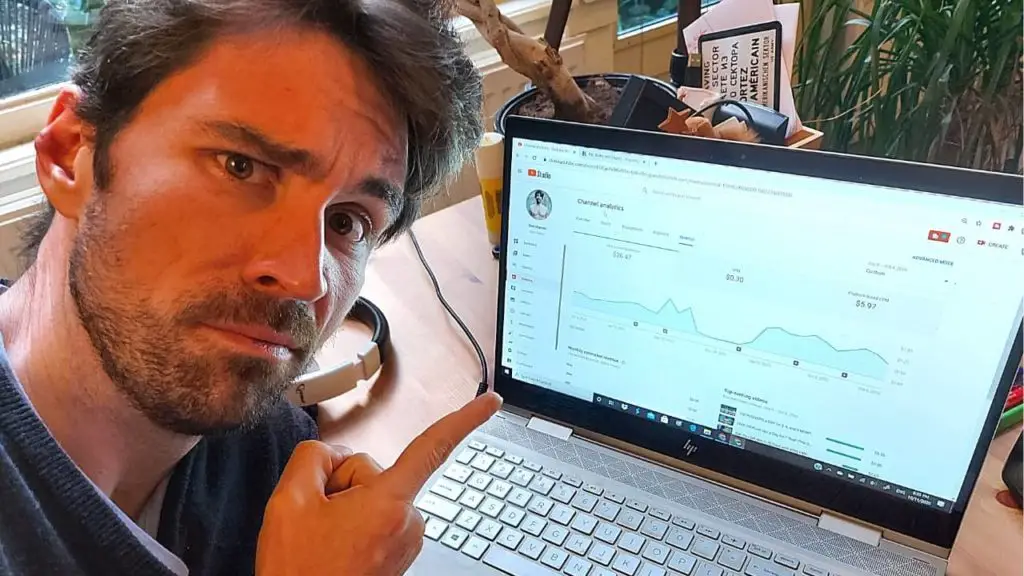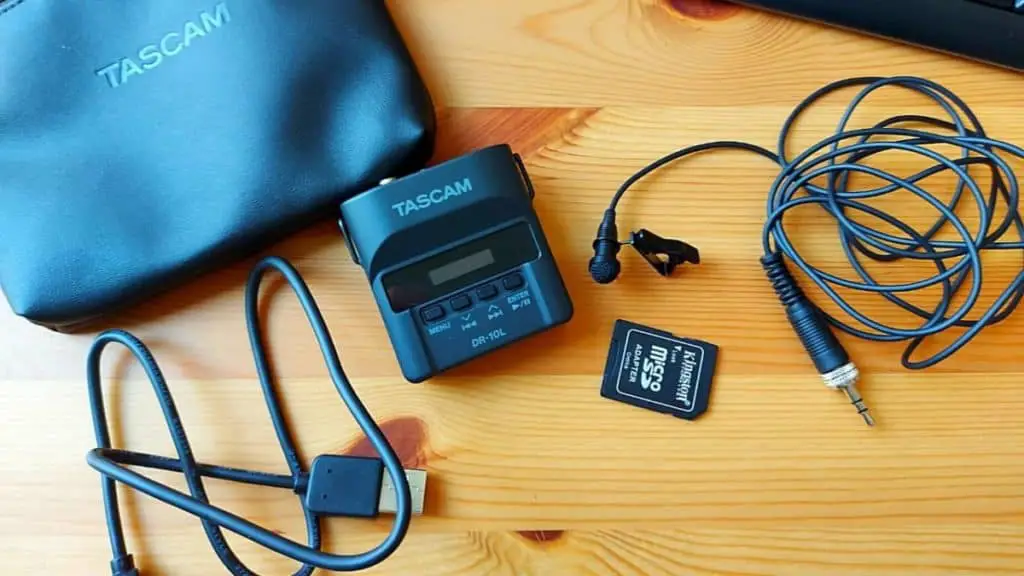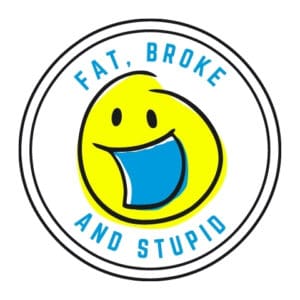
Getting your YouTube channel monetized and bringing in ad revenue for yourself sounds like a dream, right? You hear stories about people making videos, putting them online, and somehow making millions of dollars, but how much money does a normal YouTube channel with normal channel growth make when it is still young and small?
My small YouTube channel of about 2,000 subscribers earned $217.45 in ad revenue during its first six months being monetized. My profit after expenses, however, was negative.
$217.45 may not seem like a lot of money over a six month period of time… because it’s not!
At the same time, it’s nothing to laugh at, either, and there is a lot of potential in this number. Let’s dig into my six-months-of-YouTube finances a little more so that you can see what you might be getting yourself into if starting a health and fitness YouTube channel of your own, or any other channel for that matter.

How Much Money Did I Make Each Month?
I made, on average, $36.19 per month after my first six months being monetized on YouTube. Here is a graph detailing the figures:
| Month | Dates | Earned |
| Month 1 | 9-Sep-2020 – 8-Oct-2020 | $26.55 |
| Month 2 | 9-Oct-2020 – 8-Nov-2020 | $33.68 |
| Month 3 | 9-Nov-2020 – 8-Dec-2020 | $48.85 |
| Month 4 | 9-Dec-2020 – 8-Jan-2021 | $41.75 |
| Month 5 | 9-Jan-2021 – 8-Feb-2021 | $34.68 |
| Month 6 | 9-Feb-2021 – 8-Mar-2021 | $31.94 |
| Total | 9-Sep-2020 – 8-Mar-2021 | $217.45 |
As you can see, there was a bit of a spike in the months of November and December. This is because companies pay more money for ads during the holiday season. This is a predictable seasonal spike and results from companies wanting to do two things:
- Make more sales during the holidays
- Use up all of their annual advertising budget to ensure that their advertising budget remains the same, or grows, for the following year.
Things begin to normalize in January once the holidays end and companies get their new annual advertising budgets.
How Much Money Did I Make Per Video?
Another fun exercise is to think about how much money I made, on average, for each video I created. So, how much money did I make per video?
I earned, on average, $2.79 for every Youtube video I created and published from the time I started making YouTube videos to the end of my first six months monetized on YouTube.
I published my very first YouTube video on July 14, 2019! I cringe watching it today. Check it out here: 100 Pushups a Day for 30 Days (Realistic Results)
I made 42 YouTube videos from July 14, 2019 through Sep. 8, 2020 before my channel officially became monetized on Sep. 9, 2020. I made an additional 36 YouTube videos during the six monetized months from Sep. 9, 2020 through March 8, 2021.
That’s 78 total videos made and published from the time I started until I was monetized for 6 months on YouTube.
“$217.45 divided by 78 total videos created and published = $2.79 per video!!!”
-Yes, I say this all the time!
Of course, some of my videos made much more than $2.79 and others made literally nothing. My best performing video has made $44.51. This one video made 20% of my total revenue on its own!
Here is the awesome news: With all of this data and experience, and with a better understanding of what works and does not work for me, my channel, and the people who watch my content… I can make better content moving forward which should make more money, faster. Kewl!
How Much Money Did I Make Per Hour Making YouTube Videos?
Have you ever thought about how much money YouTubers make per hour working on their YouTube videos? I have, and I crunched the numbers for myself. So, how much money did I make per hour making my YouTube videos during my first six months monetized on YouTube?
I made between $0.28 and $0.47 per hour while working on my YouTube channel. The time frame was over a 1 year, 1 month, and 26 day period from the 1st YouTube video I published until I had been monetized for six months.
This earnings range does NOT include the time actually doing all of the experimenting. It ONLY focuses on the actual work time needed to:
- Script my YouTube videos
- Film the shots
- Upload and organize the files
- Edit the videos
- Create the thumbnails
- Upload the videos onto YouTube
- Optimize the content for SEO… (whatever that means)
- Responding to comments
Sounds horrible, right?!? Believe it or not, it gets worse…
- Some of my videos were month long projects.
- Two of my videos took an entire year or research to complete.
I can very honestly say that it took, on average, about 6 to 10 hours for my inexperienced filmmaking and graphic designing self to finalize each video.
If I earned $2.79 per video, then I also earned anywhere from $0.27 to $0.47 per hour of labor. Again, this does not even include doing experiments and training which were the basis of most of my videos!
Ouch!

What Is the Financial Opportunity Cost of Running a Small YouTube Channel?
I made 78 Youtube videos, each with labor time of between 6 to 10 hours. That’s a total of between 468 and 780 labor hours that I dedicated to this passion project of mine. What’s the financial opportunity cost of all of this work?
The financial opportunity cost of my small YouTube channel has been between $5,163.15 and $8,750.22 USD after six months being monetized on YouTube.
If I had simply taken on a part time job here where I currently live in the Netherlands, and worked at a minimum wage job earning about €9.72 Euros per hour (link goes to Dutch government website), then I could have made the equivalent of €4,548.96 and €7,581.60.
Converting this to USD as of today, March 24, 2021, and you get $5,380.60 to $8,967.67 USD.
Compare $8,967.67 to the $217.45 that I actually made instead and you see where the potential problem lies. I potentially left $8,750.22 ($8967.67 – $217.45 = $8,750.22) on the table by being a health and fitness YouTuber.
And yes, there are other financial factors to consider with paid employment, such as:
- Commute time
- Travel expenses
- Potential work expenses: uniform, supplies…
I get it. My only response is, “Hey, quit spoiling my fun with your smart and accurate financial thinking!”
The point remains, if you are a small YouTuber then the amount of time you put into your channel at the beginning will probably not justify the financial opportunity cost.
But here is the best part: Even though it is small, my Youtube videos make money every day whether I work or not. That’s cool! I also did the hard part already, which is getting monetized in the first place. Additionally, my editing skills have sped up over time, so I should be able to produce more content, and of higher quality, in less time.
What Was My RPM (Revenue Per Mille)?
According to Google itself, RMP, or Revenue Per Mille, is:
“a metric that represents how much money you’ve earned per 1,000 video views. RPM is based on multiple revenue sources including: Ads, Channel Memberships, YouTube Premium revenue, Super Chat, and Super Stickers.”
-Google, our benevolent provider of facts and information
What was my RPM during my first six months monetized on YouTube?
I had an RPM of $1.28 during my first six months monetized on YouTube.

This means that for every 1,000 views I received on my channel, I earned $1.28.
Since I know that I earned $217.45, I calculate that I should have had 169,882.8 views on my channel during this period. I just checked my view analytics during this same period and can confirm that I had 180,400 views. It’s very close, but not exact. The reason that this is different could be that:
- I did not monetize all of the videos on my channel.
- YouTube does not put ads on 100% of my monetized videos.
My current RPM is low compared to other YouTube channels, which can reach ridiculous heights of $30+ or more! Yet, it is totally within a normal and reasonable range for small channels like myself where the content is a bit more general, less niche, and slightly more entertainment and novelty based.
My content is now more niched down into health and fitness, but even here it is a broad and general niche with all kinds of health and fitness topics covered. This makes it harder for advertisers to 100% know who my audience is, which means my views are less valuable to advertisers.
RPM varies per channel based on the type of content you produce. For example, finance channels have much higher RPMs because advertisers are willing to spend a lot more money to advertise to people interested in finance. This is a topic where a lot of money gets thrown around.
The sweet news is: As my audience grows and as my channel focuses more and more on health and fitness, there will be opportunities for my RPM to increase over time. This is like earning more money out of thin air!
Does the 80/20 Rule Apply to My Six Month YouTube Earnings?
Investopedia defines The 80/20 Rule as follows:
“The 80-20 rule, also known as the Pareto Principle, is an aphorism which asserts that 80% of outcomes (or outputs) result from 20% of all causes (or inputs) for any given event.”
-Investopedia
In my case, it would mean that 80% of my total revenue comes from 20% of my published videos. Did The 80/20 Rule apply to me and my YouTube channel earnings?
The top 20% of my published videos earned 82.9% of my total revenue! The 80/20 Rule does apply to my YouTube earnings during my first six months monetized on Youtube.
I published 78 videos from the time I started until my channel had been monetized for six months. Those 78 videos earned me $217.45.
20% of 78 videos is 15.6 videos. Thanks to the power of rounding, this becomes 16 videos. Just to be fair, I also checked what the result would be when I rounded this number down to 15.
Then, I added up the total earnings for the top 15 and top 16 videos and compared that to my total earnings. The results, again, were:
- Top 15 Videos = 82.1% of Earnings
- Top 16 Videos = 82.9% of Earnings
My number 1 video alone earned 18.8% of my total earnings!!!! That’s this video, by the way: I Did 100 Pushups a Day for 3, 6, and 9 MONTHS (How My Body Changed)
The funny thing is: It is not the video with the most views on my channel, but it did earn the most money.
The best thing is: I can learn from the success of this video, analyze what worker here with respect to content and monetization, and try to include more of those successful elements in future videos to improve my earnings potential.
What Will I Do With My Six Months of YouTube Earnings?
I already spent it… Whoops!!! : )
I bought a TASCAM DR-10L lavalier microphone (this is an Amazon affiliate link) to improve the quality of the audio on my YouTube videos.

I paid €228.00 Euros which, based on today’s conversion rate, is about $270 USD! That’s more than the $217.45 that I earned, meaning my YouTube channel is currently running at a loss.
And that’s totally OK with me!
My goal with my YouTube channel is to reinvest the money I make into creating better Youtube videos with more interesting, more helpful content for everyone out there interested in having fun with health and fitness. That target demographic includes me, too!
Additionally, the TASCAM DR-10L lavalier microphone (Amazon Affiliate Link) was explicitly recommended to me by the extremely knowledgeable and successful content creators on the Income School team.
I participated in their Ultimate Content Warrior Challenge where I received direct feedback from them about how I can improve the content on my YouTube channel. While they enjoyed the content, they felt that my audio quality could be improved.
The idea is this: people will forgive lower video quality on YouTube, but poor audio quality is unforgivable and will cause people to leave your video prematurely.
So, I splurged and bought myself a new Youtube toy using my YouTube earnings. And honestly, the TASCAM DR-10L lavalier microphone (Amazon Affiliate Link) has been AWESOME so far and I am very happy with the purchase. I 100% highly recommend it to any of you out there looking to up your YouTube game, too.
Is It Financially Worth It to Make YouTube Videos?
What this question is really asking is: Should I (you) start making YouTube videos and expect to make a lot of money doing it?
You should never do anything and expect to make money doing it. Creating a YouTube channel to earn money turns it into a business, and all businesses come with inherent financial risk.
Sure, some people make it big from the very beginning on YouTube. They blow up quickly and the money starts pouring in.
For most people, however, YouTube (just like most great things in life) requires consistent effort over a long period of time if you want to be successful at it and earn an income with it. This is not the sexy answer, yet that’s how it is.
All that being said, I participate in the Project 24 program by the awesome team at Income School. Their mission is to help people create a full-time income in 24 months through blogging and/or YouTube.
I can honestly say that this website and my YouTube channel would not be where they are today without the learning and encouragement of the Project 24 team and community. I highly recommend checking it out if you are interested in blogging and/or YouTube, too!

